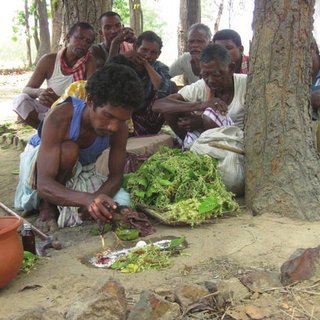Telangana historically harboured forest dewellers and nomads. The area spread in almost the entire center of the Deccan plateau. Karimnagar, Adilabad, Warangal, Khammam, Nalgonda and Mahabubnagar districts have a large extent of forests where in the catchment areas of Godavari, Krishna, Tungabhadra, Manjira, Maner, Wardha and Pranahita are present. Here tribal communities such as Gonds, Rajgonds, Kolmas, Nayakpods, Kondareddis, Koyas and Chenchus started their civilization in the forests. Lambadas and Mathuras belonging to pastoral communities were occasionally visiting these forests since medieval times for grazing of cattle and for exchange of goods. These tribes also made these areas as their habitats in course of time and started settling down in the forests significantly from late 19th century. Today Telangana constitutes largest Adivasi population because it has a large chunk of forest area until the end of 19th century, after which time it was completely destroyed by the state’s intervention in the forest management. The sprawling growth of urban areas and greater degrees of assimilation of Adivasis into the mainstreams has changed the socio-economic and cultural dynamics of the tribals.
Pre-colonial period better
Historically, community rights for land and other forest resources were enjoyed by these Adivasis in the pre-colonial period. These rights were usurped by colonial States’ revenue and forest regulations. Individual property rights were introduced instead. In an effort to undo the historical wrongs, the post-colonial State introduced the programme of ‘rights approach’ under which the Adivasi rights over land and minor forest produce were to be reinstated. However, these initiatives could not move forward as intended due to several institutional and legal hurdles.
State control over forests increased
Researchers have shown that long established rights of Adivasis over forest resources were completely replaced by Hyderabad State on lines with British India Government in the last quarter of 19th century. The State control over forests increased quickly and vastly. However, the decline in forest lands in Telangana affected the livelihood practices of forest dwellers and nomadic people who had subsisted on shifting (podu) cultivation and forest produce. Banning of shifting cultivation, increased role of forest contractors, strict demarcation of forest lands, auctioning of forest produce (depriving Adivasis), prohibiting cattle grazing also have adversely impacted the Adivasis.
All initiatives are dubious
All the forest departments’ initiatives for forest conservation right from their inception have been considered as dubious by several research studies. The denial of Advasis rights on forest resources was confirmed in the postcolonial era. Even stricter systems were introduced to check Adivasi movements in forests in the post-Independence times.
The legal frame now puts the State and Adivasis at loggerheads. The issues beg political solutions within the frame of Indian federal system, not legal or administrative solutions.
The enactment of FRA is basically aimed at restoring collective forest resource rights and dwelling rights for ‘most primitive groups’ and conversion of forest villages into revenue villages. However, its implementation has been going on at snail’s pace.




